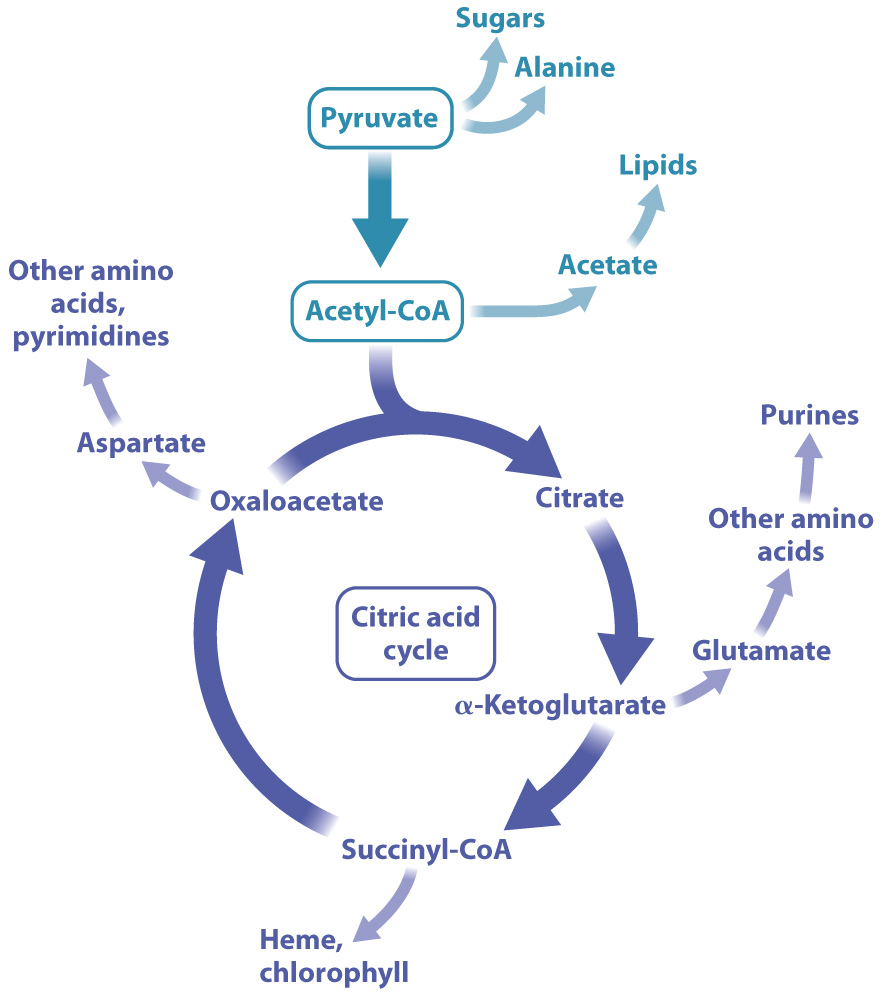CASE 1 THE FIRST CELL: LIFE’S ORIGINS
What were the earliest energy-harnessing reactions?
Some bacteria run the citric acid cycle in reverse, incorporating carbon dioxide into organic molecules instead of liberating it. Running the citric acid cycle in reverse requires energy, which is supplied by sunlight (Chapter 8) or chemical reactions (Chapter 26).
Why would an organism run the citric acid cycle backward? The answer is that running the cycle in reverse allows an organism to build, rather than break down, organic molecules. Whether the cycle is run in the reverse or forward direction, the intermediates generated step by step as the cycle turns provide the building blocks for synthesizing the cell’s key biomolecules (Fig. 7.9). Pyruvate, for example, is the starting point for the synthesis of sugars and the amino acid alanine; acetate is the starting point for the synthesis of the cell’s lipids; oxaloacetate is modified to form different amino acids and pyrimidine bases; and α-(alpha-)ketoglutarate is modified to form other amino acids. As a result, for organisms that run the cycle in the forward direction, the citric acid cycle is used to generate both energy-

The centrality of the citric acid cycle to both the synthesis of biomolecules and to meeting the energy requirements of cells suggests that this cycle evolved early, appearing in some of the first cells to feature metabolism. This early appearance of the citric acid cycle, in turn, implies that the great variety of biosynthetic and energy-